Coffee lovers are always on the hunt for new and exciting flavors, and barrel-aged coffee has emerged as one of the most intriguing trends in the specialty coffee world. By storing green coffee beans in used spirit barrels, roasters create unique flavor profiles that blend the rich notes of coffee with hints of bourbon, rum, or wine. But where did this innovative practice come from? Let’s dive into the history of barrel-aged coffee, from its accidental beginnings to its modern-day artisanal revival.
Early Beginnings: The Unintentional Aging of Coffee (1500s–1800s)
The roots of barrel-aged coffee trace back to the 1500s, when coffee first reached Europe through the port of Mocha, Yemen. During long sea voyages around Africa, coffee beans were stored in wooden ships and barrels, where they naturally absorbed flavors from the wood and the salty sea air. This unintentional aging process gave the coffee a distinct, mellow flavor with reduced acidity, which Europeans came to prefer over fresher beans.
By the 19th century, with the opening of the Suez Canal in 1869, faster shipping routes made fresher coffee more accessible. Surprisingly, European consumers initially rejected these “new” beans, favoring the aged coffee they’d grown accustomed to. To meet this demand, coffee was intentionally aged in open-sided warehouses near ports for six months or longer, where exposure to humidity and sea air enhanced its flavor. While not specifically barrel-based, this early practice of aging coffee set the stage for the modern innovation of barrel aging.
The Modern Revival: Barrel Aging Takes Shape (2010s)
Fast forward to the 2010s, when the specialty coffee movement was in full swing, driven by a growing demand for unique, artisanal products. Inspired by the craft beer and spirits industries—where barrel aging is a time-honored tradition for adding complex flavors like vanilla, caramel, and oak—coffee roasters began experimenting with a similar approach.
One of the earliest pioneers of intentional barrel aging was Modern Times Coffee Roasters, which started aging green coffee beans in spirit barrels around 2015. This innovation, led by figures like Jacob McKean and Amy Krone, marked the birth of modern barrel-aged coffee. By 2017, the trend had caught on, with roasters like Oak & Bond Coffee Co. in Minnesota and others, such as Chicago’s Metropolis Coffee and California’s Barrelworks, joining the movement. These roasters began offering barrel-aged coffees as premium products, often using barrels previously filled with bourbon, rum, wine, or even tequila.
How Barrel Aging Works
The barrel aging process is both an art and a science. Green coffee beans, which are porous and absorbent, are placed in used spirit barrels for two to three weeks (sometimes longer), allowing them to soak up residual flavors from the wood and the previous contents. Common barrel types include:
- Bourbon barrels: Impart sweet, caramel, and vanilla notes.
- Rum barrels: Add hints of molasses, honey, and tropical fruit.
- Wine barrels: Contribute fruity or earthy tones, like dark berries or chocolate.
- Whiskey or rye barrels: Offer smoky or spicy undertones.
The beans are carefully selected to complement the barrel’s flavors—think bourbon natural Ethiopia or Pinot noir-aged Guatemala Huehuetenango. After aging, the beans are typically roasted to a medium or dark level to enhance the infused notes, creating a coffee that’s both familiar and strikingly unique. Importantly, no alcohol is added, ensuring the final product is purely coffee with enhanced flavor.
The Craft and the Controversy
Barrel aging is a labor-intensive process, often done in small batches, which adds to its allure and premium price tag. Barrels, hand-crafted by coopers and charred before use, cost between $150 and $300 each, and their size and type—standard American barrels (53 gallons), sherry butts (132 gallons), or smaller quarter casks (13 gallons)—affect the flavor outcome. Some roasters, like Cooper’s Cask Coffee, source award-winning barrels from distilleries like Sons of Liberty Spirits or Thomas Tew Rum, ensuring quality and sustainability.
However, the practice isn’t without its critics. Some coffee purists argue that barrel aging can mask a bean’s natural terroir—the unique flavors tied to its origin and processing. For them, the process risks overshadowing the coffee’s inherent character. On the other hand, enthusiasts celebrate the creativity and complexity it brings, viewing barrel-aged coffee as a bold new frontier in the coffee world, much like experimental brews in craft beer.
From its unintentional beginnings during 16th-century sea voyages to its modern revival in the 2010s, barrel-aged coffee is a testament to the coffee industry’s endless creativity. Whether you’re a purist who cherishes a bean’s natural flavors or an adventurer seeking bold new tastes, barrel-aged coffee offers a fascinating glimpse into the evolving world of specialty coffee. So, the next time you sip a bourbon-barrel-aged brew, you’re not just tasting coffee—you’re savoring centuries of history and innovation in every cup.
Want to try barrel-aged coffee for yourself? Check our Skål Barrel Aged coffee here!
